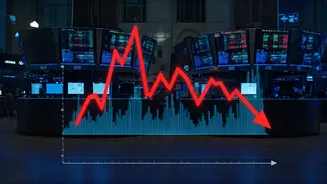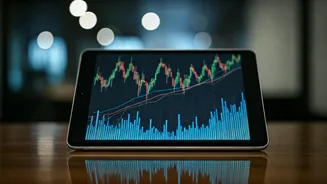Market Movers Analyzed
Institutional investors, including mutual funds, pension funds, and hedge funds, wield considerable influence in the stock market. Their investment decisions
often reflect long-term strategies and in-depth market analysis. Analyzing their moves provides valuable insights into market sentiment and potential growth areas. In the second quarter, specific large-cap stocks garnered significant attention from these major players. Their choices often signal confidence in a company's fundamentals, future prospects, or strategic positioning within its industry. Tracking these investments can offer clues to other investors about promising opportunities in the market. Consequently, examining where these big money players are putting their funds helps individual and smaller-scale investors make more informed decisions.
Top Stake Increases
The second quarter of the year witnessed substantial stake increases by institutional investors in ten prominent large-cap stocks. These investments suggest strong belief in the companies' potential and long-term value. While the specific stocks and the extent of the increases vary, the collective trend indicates strategic portfolio adjustments. These adjustments were driven by factors like perceived undervaluation, industry growth prospects, and positive company performance. The companies within these stocks may include sectors such as technology, banking, energy, and infrastructure, all of which are critical to the Indian economy. By concentrating on these stocks, institutional investors aimed to capitalize on growth and ensure that their assets performed well in the long run. Observing these specific moves can inform others about market dynamics.
Factors Behind Decisions
Several factors likely influenced the decisions of institutional investors during the second quarter. These considerations include financial performance, future growth forecasts, and competitive positioning within the market. Investor confidence is often boosted by solid company earnings, revenue growth, and effective cost management. Future growth forecasts, which consider things like market trends, innovation capabilities, and expansion plans, also play an important role. Furthermore, strategic industry positioning, including market share, competitive advantages, and potential for disruption, also impacts investment decisions. Examining the details of these considerations provides insights into the rationale behind institutional investor actions and reveals how market participants view various investment options.
Impact and Implications
The increased stakes taken by institutional investors can have a ripple effect on the market. Higher demand for a stock can increase its price, benefitting existing shareholders and potentially attracting more investors. Increased investment can also send a positive signal to the market, improving investor sentiment and increasing confidence in the company’s future. For the companies, this influx of capital can provide resources for growth, research and development, and strategic initiatives. However, it's important to remember that investment decisions are not always guaranteed to succeed. Therefore, all investors should conduct thorough research and take into account their own risk tolerance before making any investment choices. This data is to be used as a guide when analyzing the market.
Monitoring Future Trends
Keeping track of institutional investor activity is an ongoing practice. Monitoring their actions provides valuable insights into market trends and emerging investment opportunities. Regularly reviewing quarterly and annual reports of institutional investors allows market watchers to follow their strategies. Further, analyzing stock market trends such as sector performance, economic indicators, and geopolitical events can provide additional insight. By combining the data on institutional investment with these additional sources, investors can get a comprehensive understanding of the market. Staying informed and adapted is key to making wise investment decisions in the changing financial landscape. Being prepared for future events by continuous monitoring and analysis is critical.













